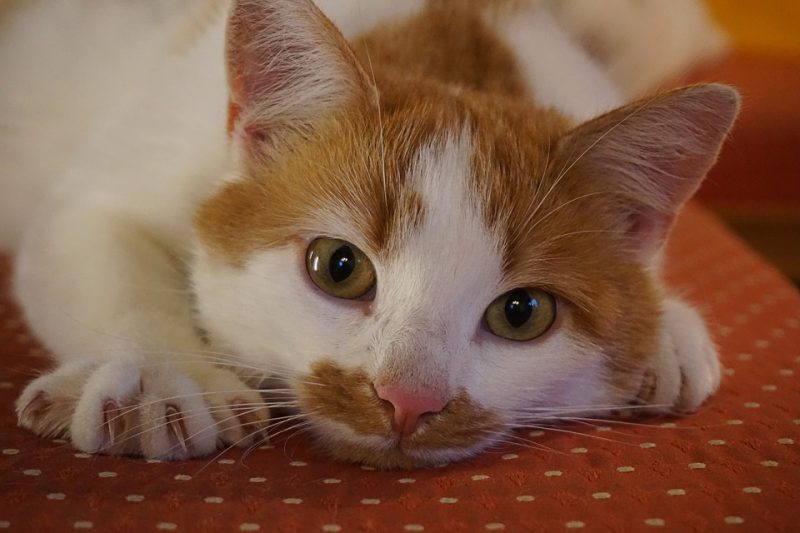
The New Hampshire Society for the Prevention of Cruelty to Animals encourages pet owners to seek alternatives to the declawing of cats. If you are thinking about having your pet declawed, please take a moment to review the following information.
Why do cats scratch?
A Cat’s claws are constantly growing and shed regularly similar to our own. The part that sheds or frays is the sheath and sometimes needs a little help coming off. Scratching on rough surfaces such as furniture, wood or a rug helps remove the sheath and expose new sharp claw. Scratching behavior is also used mark territory. Small scent glands on the bottom of your cat’s feet allow it to leave tiny traces of scent that let the cat and other cats know, “This is mine.” Scratching can also provide valuable stretching and foot-muscle exercise.
What is declawing?
Claw is an extension of bone and cannot grow back if the bone it extends from is not present. For this reason, the standard declawing procedure calls for the removal of the claw and the first bone of the toe. The operation is actually an amputation of the first bone and claw and is usually performed on the front feet only. As with all surgery, pain and bleeding maybe experienced.
What risks are associated with declawing?
Medical risks
if f the whole claw and first bone is not removed, misshapen claws can grow back. In addition, if a bone fragment is left at the surgery site, it may become a source of infection. Both, claw re-growth and infections necessitate additional surgery. An incorrectly positioned cut during declawing surgery can remove too much of the toe, taking with it part of or the entire toe pad.
Behavior changes
Although there are no studies that support that declawing will change the cat’s behavior, the NHSPCA has noticed a few things in some declawed cats such as biting or a change in litterbox habits. We can attribute most of the behavior problems that we have seen to sensitivity or perhaps pain of the foot. Cats also realized very quickly that a major resource for defending themselves is no longer available and this may be why biting develops as a new defense.
What are alternatives to declawing?
Introduce a scratching post Buy or make a scratching post that is tall enough for the cat to stretch completely when scratching, and stable enough so it will not wobble when being used. Cover the post with a heavy, rough material like sisal rope or low pile carpet. Make the post a fun place to be by placing toys on or around it, or by rubbing it with catnip and put it in an accessible area. If you are trying to discourage the cat from scratching a particular piece of furniture, try placing the post in front of it, gradually moving the post aside as the cat begins to use it regularly.
NHSPCA Training
Encourage the cat to claw the right things and discourage him from clawing the wrong things. Bring the cat to the scratching post. Each time you do this praise the cat by petting and giving treats. Spend time with the cat while it is on or near the post will encourage the cat to continue the behavior. If the cat begins to scratch where on something it should not, a firm “Hey” or “Eh- Eh” is best and then move the cat to the scratching post. Reward the cat with praise, petting and treats. Keep the cats’ nails trimmed Cutting your cats nails regularly will help remove the sheath and control the amount of damage he or she may cause from scratching the furniture. However, not every cat will tolerate a good trim.
Start now by getting your kitten used to having his feet handled and nails clipped while it is young. With an older cat, it may help to begin by handling the feet first. Then introduce the clipping procedure by approaching the cat while it is relaxed (or even napping) and clip only one nail each time. Praise your cat while you clip the nail, and reward it with a treat afterwards. If you are in doubt about what the proper nail length looks like, ask your veterinarian to show you.
The only equipment necessary is a good pair of human style nail clippers. Alternatively, nail scissors made specially made for cats. Slide the blade onto the nail you will be trimming. Before cutting look for the pink line or “quick”, that runs down the center of each nail. The clipper blade should be placed about an eighth of an inch in front of the “quick.” Clip the nail swiftly and be extremely careful not to cut into the quick. If this happens, bleeding is likely. The bleeding usually will take quite a while to stop without assistance. Use baking flour to “plug up” the end of the nail. If you trim a small amount of nail, every couple of weeks, the quick will recede and your cats’ nails will stay shorter and cause less damage.

